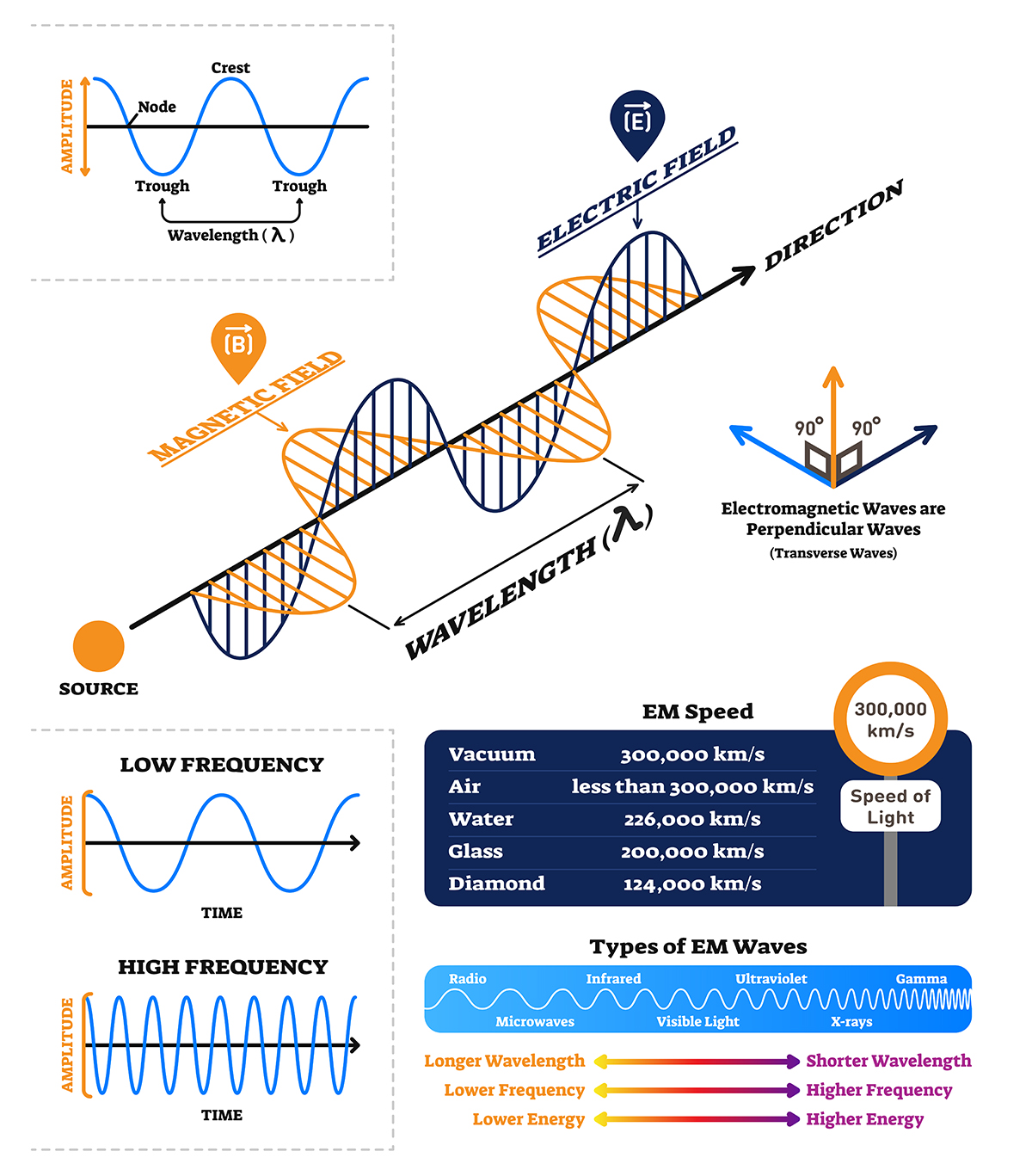Health Effects of EMF Radiation

RF-EMF radiation can cause damage to DNA, heat up of tissues and even disrupt the blood brain barrier. These effects are real and ARPANSA is active in collaborating within the EHS group, the medical specialists and researchers. ARPANSA will continue to study research related to the health effects of EMF radiation.
RF-EMF can cause DNA damage
The exposure to electromagnetic fields created by humans (EMFs) are associated with DNA damage as well as negative health adverse effects. EMFs can disrupt intracellular ionic concentrations, which are vital to maintain the balance of electrochemical activity in cells. This can disrupt cell homeostasis, resulting damages to the DNA. Moreover exposure to EMFs is also associated with the production of free radicals and reactive oxygen species (ROS).
The exposure to radiation from RF-EMF has been linked with alterations in male germ cell development. This results in the transformation of germ cells into spermatozoa as well functioning maturation as spermatozoa travel through the epididymis. To investigate the effect of RF-EMF exposure on the development of male germ cells, a specially-built waveguide device was developed for the purpose of exposing mice that were not restrained to RF-EME at 2.2 W/kg.

In a recent study, researchers found that exposure to RF-EME causes the oxidative DNA damage of spermatozoa. Sperm DNA fragmentation was increased by 18% after a week of treatment, and by 23% after five weeks. Furthermore, DNA damage in mitochondria was observed by measuring the level of a biomarker, 8-hydroxy-2-deoxyguanosine (8-OH-dG).
Although the radiation emitted by RF-EMF isn't yet classified as a cancer-causing agent. But, several studies have shown that exposure to RF-EMF radiation can damage DNA integrity in a variety of cell types. In one of these studies researchers were exposed Vero cells with an EMF at 100 Hz over 45 minutes. They measured DNA damage 48 hours after exposure to determine if exposure affected DNA integrity.
The RF-EMF effect causes the heating of tissues
Although the effects of RF-EMF are typically thought to have thermal origins, some studies have demonstrated that non-thermal effects are also observed. These may be the reason for some of the unresolved issues in epidemiological studies of EMF hypersensitivity. It is therefore important to take into account non-thermal effects when conducting a systematic review.
The non-thermal effects that RF-EMF can have may be mediated by the cell membrane. This is a field which has already been thoroughly examined. In particular the electrochemical properties of cell membranes has been studied. Current understanding suggests that energy from RF-EMFs greater than 1 MHz is transferred to tissue through dielectric and ionic dissipation. Studies of the theory have suggested that the energy transferred to the tissue could be up to 200 kV/m.
The electric properties of tissue are controlled in the form and quantity of water molecules and ions and other molecules in the body. This determines how well absorbed EMR RF is by various tissues. The tissues with the highest conductivity tend to absorb more of the EMR field and produce more of an effect. This is why the degree of tissue heating does not increase steadily as it moves from the exterior to however, it is more prevalent in hot areas. Bone and fatty tissue are less susceptible to RF heating than other tissues, because they have a low water content.
The depth of penetration of the electromagnetic field is determined by the strength and frequency of the field. Muscle tissue absorbs more field energies than the other tissue, and converts it to heat more efficiently. Typically the depth of penetration of RF-EMF is measured as millimeters (mm). However, emf radiation symptoms , the more shallow the penetration.
RF-EMF causes blood-brain barrier disruption
Researchers have discovered that RF-EMF can alter the blood-brain-barrier, altering sleep patterns and neurotransmitter levels. In addition to this, the effects of EMF on brain activity are linked to neurodegenerative disorders. For emf radiation symptoms , EMF from mobile phones could affect the electroencephalogram's activity and sleep patterns, and the activity of nitric oxide and xanthin oxide.
Researchers at the Vienna University have studied the effects of exposure to RF EMF on brain cells. They also examined what effects ELF EMF on the brain system. Although the cellular mechanisms that are involved aren't fully understood however, there is an obvious connection between exposure to ELF-EMF and myelin depletion. This relationship might account for the electro-hypersensitivity symptoms of electro-hypersensitivity. However, there are tested methods to regenerate myelin in the brain.
Researchers have discovered that exposure to frequencies of 900 MHz EMF caused a rise in the permeability of BBB and also increased the symptoms of neuronal damage in rats. They also observed increased exovasation of albumin to neurons. Furthermore, they discovered that after 30 minutes of 900 MHz exposure 99mTc-MIBI accelerated its permeation to the cerebral cortex. However, this effect did not occur when using Evans blue injections.
Despite emf radiation , RF EMF does not have a clear mechanism to disrupt the BBB. Evidence suggests that non-thermal EMF exposure may increase erythrocyte cell membrane permeability. This could alter the BBB and increase the efflux of calcium-ion. Additionally, the presence of a 99mTc-MIBI radiotracer in the brain has also been associated with increasing the permeability of BBB.
